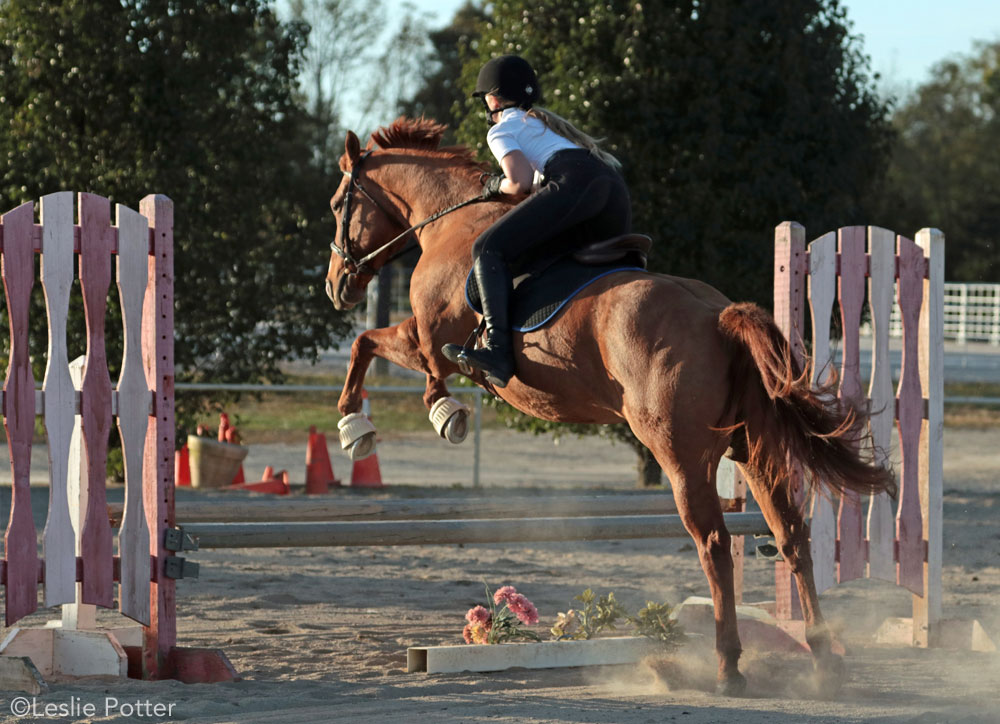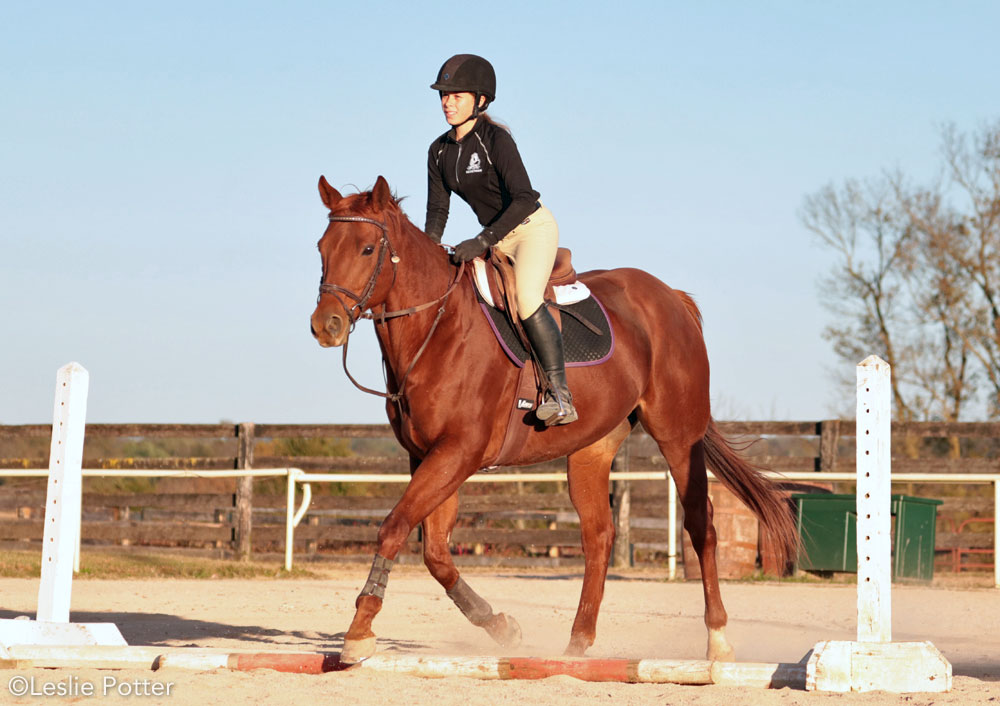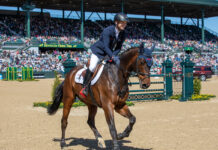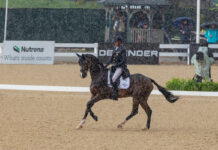 Have you dreamed of riding Pegasus as he soars through the air? Flying over jumps aboard your favorite horse gives you nearly the same feeling. Yet jumping is a specialized equestrian sport. In order to jump successfully—and safely—you and your horse will need to learn some new skills. Here are a dozen show jumping do’s and don’ts.
Have you dreamed of riding Pegasus as he soars through the air? Flying over jumps aboard your favorite horse gives you nearly the same feeling. Yet jumping is a specialized equestrian sport. In order to jump successfully—and safely—you and your horse will need to learn some new skills. Here are a dozen show jumping do’s and don’ts.

Jumping Do’s
If you develop good habits right from the start, there will be fewer problems to fix as you graduate to bigger jumps and tougher courses. Here are a few show jumping do’s to follow!
1. Always wear a helmet.
Even if you feel super confident and you’re only planning to jump a few cross-rails, wear a helmet. Not only can a helmet save your brain in case you take a tumble, it also shows you’re a dedicated young rider. Think of your helmet as part of your athletic uniform.
2. Jump only when a coach or trainer can help you.
A pair of expert eyes can spot problems you might not feel from the saddle, and suggest creative ways to fix them. Plus, it’s much more convenient to have someone on-hand who can adjust the ground poles and jumps when necessary.
3. Start from the ground up.
While it’s true that horses naturally have the ability to jump, they must be trained to jump at a relaxed, steady pace, and to listen to cues from their rider. Spend lots of early lessons working over ground poles and cavalletti so that you and your horse can learn to jump together as a team. You’ll learn about your horse’s pace, length of stride and how to guide him in a straight, direct line.
4. Become an expert at trotting low jumps.
It’s much easier to think about your position and your horse’s behavior when you’re trotting rather than cantering. Gain confidence and master a solid position by trotting over low jumps before you graduate to cantering them.
5. Spend part of your flatwork time riding in a two-point position.
Since a proper two-point position is very similar to the correct position over a jump, it makes sense to practice it frequently. The two-point also forces your heels down, makes your lower leg strong, and improves your balance.
6. Practice over a variety of jumps.
Eventually, you need to move beyond simple rails. By introducing some small yet interesting elements, such as flower boxes or little picket gates, your horse will become braver and you’ll feel what it’s like to sail over different obstacles. Even better, neither of you will be surprised by jumps you might encounter in the show ring.

Jumping Don’ts
Sometimes, knowing what not to do can help you avoid mistakes and bad experiences. That’s especially true when you’re learning how to jump. Here are a few show jumping don’ts that you should try not to do.
1. Don’t hold the reins too tightly.
To jump safely and in good form, your horse needs the freedom to use his head and neck. Reins that are too short restrict your horse’s jumping effort. If you happen to pull back on the reins when your horse jumps, it’s like asking him to halt in mid-air.
2. Never jump ahead of your horse.
As you gain jumping experience, you’ll be able to judge when your horse is about to leave the ground. Don’t anticipate that moment by tipping forward in the saddle or giving an extra push with your body to help him take off. Both bad habits can upset your horse’s balance and lead to a refusal.
3. Don’t jump a horse that feels too fast or too strong.
When a horse races toward the jumps, it’s called “rushing.” Such a bad habit usually occurs because the horse is fearful, and wants to get over the scary jumps as quickly as possible. Unfortunately, rushers can be dangerous because they tune out their riders.
4. Avoid jumping a bored or tired horse.
Just like you, your horse will get bored doing the same thing over and over. Be mindful of how many jumps your horse takes during a lesson or in competition. Otherwise, your horse could get lazy and begin dropping rails. If your horse seems tired and out of energy, stop jumping. A weary horse is more likely to go lame or be injured.
5. Don’t try to conquer bigger jumps at a horse show.
Think of a show as a place to demonstrate what you and your horse do best. It’s not where you experiment with something new. Only enter classes with jumps equal to those in your lessons.
6. Never jump alone.
It’s unsafe to jump by yourself, even if your horse is quiet and trustworthy. An unexpected stumble or surprise spook can toss you out of the saddle. You’ll be left in the dirt as your horse gallops off without you. Who will help catch your Pegasus?
This article originally appeared in the January/February 2018 issue of Young Rider magazine. Click here to subscribe!





